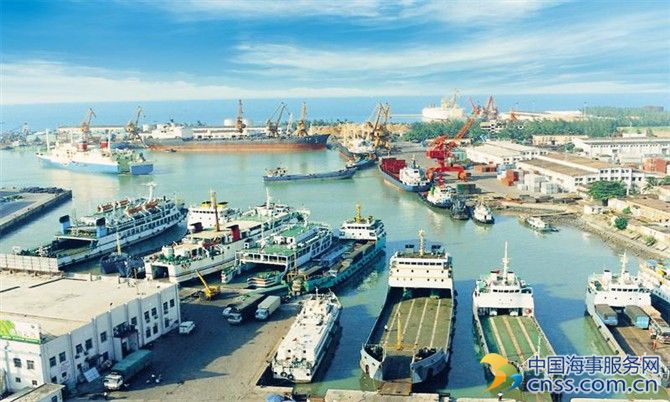Asia Becomes Bright Spot in Global Trade

The Asia-Pacific region has started racking up some of its best export gains in recent years, a development largely obscured by policy makers’ fretting over the future direction of global trade.
Imports and exports in the region have shown a sharp turnaround after years of weakness, powered by an upturn in global demand driven by the U.S., higher oil and commodity prices, and improved activity in China–Asia’s economic giant.
The trend could be difficult to sustain amid President Donald Trump’s protectionist talk, the U.K.’s decision to leave the European Union, and the latest geopolitical tensions surrounding North Korea and Syria. A softening of China’s demand for imports alone is forecast to temper the region’s recent surge in the second half of the year, as Beijing gradually tightens market interest rates to contain property bubbles and rising debt.
Still, data from China released Thursday gave an indication of the improvement in global demand, showing a 16% jump in exports in March. A 20% rise in the country’s imports is also a good sign for Asian trade, as even a small increase in Chinese demand can prompt eye-catching export gains around the region.
In South Korea, the region’s fourth-largest economy, exports logged their third straight double-digit gain in March. Taiwan’s exports–a handy gauge of tech sector demand–climbed 15% in the first quarter, as semiconductors continue to fly off production lines for assembly into the latest smartphone products.
Exports out of Singapore, a bellwether for trade flows in the region, are on track for their fastest growth since 2010, according to Tim Condon, ING’s chief Asia economist. Even slow-moving Japan is showing an improvement in its trade performance.
“It’s probably the strongest recovery we’ve seen [in Asian trade] since the rebound from the financial crisis,” said Nomura research analyst Rob Subbaraman, though he adds that the gains are still small in scale compared with growth before the crisis.
Electronics are one of the big drivers of the improved trade performance in Asia.
Samsung’s Galaxy S8 and the next version of Apple’s iPhone loom large in the latest round of smartphone releases, fueling demand for chips, panels, lenses and organic light-emitting diode screens, which are thinner than traditional liquid-crystal displays.
Samsung’s OLED panel-making capacity is expected to reach 450 million units by the end of 2017 with 70 million to 80 million screens committed to Apple, according to Mehdi Hosseini of Susquehanna Financial Group, an indication of the scale of expected smartphone sales.
“The upturn in global electronics demand in recent months looks set to continue in the near-term,” said Rajiv Biswas, chief Asia-Pacific economist at IHS Markit, though he, like other analysts, adds that tech demand will inevitably slow after the smartphone release cycle runs its course.
The increase in demand for semiconductors has been significant and unexpected, said John Chia Sin Tet, chairman and group managing director of Unisem (M) Bhd., one of the largest listed chip manufacturers in Malaysia.
“We are seeing increased demand in the smartphone, automotive and consumer electronics segment of the business,” he said.
A rise in oil and other commodity prices also underlies the improved export figures in the region and may have been one of the initial triggers alongside the ramping up of the smartphone release cycle. Higher commodity prices inflate the value of trade compared with year-earlier figures on a lower base of comparison. Oil prices averaged around $54 per barrel in the first three months of 2017 compared with $34 a year earlier, while iron-ore and coal prices are up 77% and 59%, according to World Bank figures.
Raymond Yeung, senior economist at ANZ Banking Group, says that the higher export levels are an indication of improved global demand that has activated supply chains throughout Asia, while the higher import levels reflect the higher commodity prices.
“It’s going back to that old school thing that made Asia great: The supply-chain phenomenon driven by the U.S. consumer,” ING’s Mr. Condon said.
Some clouds over the U.S.-China relationship may fade after Mr. Trump said Wednesday that he wouldn’t seek to declare China a currency manipulator and may accept a trade deal with more favorable terms for Beijing if it helps rein in North Korea’s nuclear program.
Still, it is unclear whether the current upswing will continue long enough to filter into a wider spectrum of the Asian economy. The region relies more heavily on international trade than elsewhere in the world, and it won’t get the boost it had expected from the Trans-Pacific Partnership trade deal, which was abandoned by the U.S. after Mr. Trump took office.
“This is going to be a great year for Asian trade,” said ING’s Mr. Condon, noting that a number of Asian countries have raised their growth forecasts for the year. “But keep the champagne on ice.”
Source: Dow Jones
HEADLINES
- Do shipping markets want Biden or Trump for the win?
- All 18 crew safe after fire on Japanese-owned tanker off Singapore
- Singapore launching $44m co-investment initiative for maritime tech start-ups
- Cosco debuts Global Shipping Industry Chain Cooperation Initiative
- US warns of more shipping sanctions
- China continues seaport consolidation as Dalian offer goes unconditional